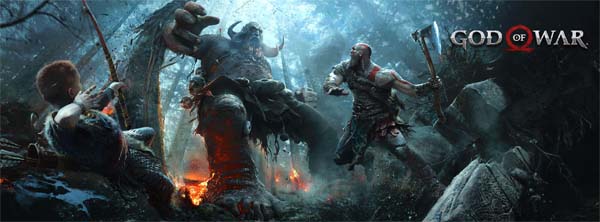
Vikings and norse mythology seems to have been a popular concept in games recently. Hellblade: Senua's Sacrifice, for instance, is an excellent hack-n-slash adventure through Norse hell. I've also been playing the Wasteland-like RPG Expeditions: Vikings on Steam (which I'm hoping to review soon). I also have games like Mount & Blad: Viking Conquest and Total War: Thrones of Britannia on my short list of games I'd like to play. And there was also the Viking character in For Honor.
Now, Sony's PlayStation flagship God of War has jumped from Greek mythology to Norse mythology. Having killed all the Greek gods, Kratos has apparently settled down in the mythological Midgard with a wife and son, only for his wife to die and his son be attacked by the Norse god Baldr. This sends Kratos and Atreus on a father-son bonding adventure to spread Atreus' mother's ashes from the highest peak in all the realms, and to learn why the Aesir are suddenly keen on hunting them.
Norse mythology seems to be a popular subject in media lately.
A father-son murder team
Atreus has some of the same problems that The Last of Us has with Ellie. Atreus doesn't feel vulnerable enough to demand protection, and he's rarely relevant outside of combat, except for his running commentary about what you're doing. Because of this, the actual game rarely feels like it's about protecting or escorting Atreus. And even though the game is ostensibly about Kratos teaching Atreus how to fight and be a man, the player never has an opportunity to actually teach the kid or take on any parental responsibility for him. It's just about Kratos throwing axes at draugr, and Atreus occasionally shoots them or jumps on their heads to help you out. The puzzle sections rarely require using Atreus (other than occasionally shooting something with his bow or having him scamper through a small tunnel).
Atreus is basically just an extra ranged attack.
That being said, I think that God of War makes some strides in the right direction (compared to The Last of Us). The player (and Kratos) can command Atreus to attack a target with his bow, which is one of the easiest and most consistent ways to deal stun damage to enemies, which opens them up to an intant-kill attack from Kratos. It's also a strategy that is pretty much essential on the harder difficulties. This creates a much greater sense of playing in tandem with Atreus, as he and Kratos often work together to defeat foes.
Atreus and Kratos can also break each other out of being grappled or stunned. I've never gotten a "Game Over" as a result of Atreus being defeated, so I'm not sure if that's a possible fail state. Being grappled or stunned only seemed to ever temporarily take Atreus out of the fight and negate the ability to use his bow. Either way, this is an improvement over Ellie from The Last of Us, who (as far as I recall) operated entirely independently from Joel, was never at any risk, and could be completely ignored for most of the player's time actually playing the game.
Kratos and Atreus can break each other out of enemy grapples and support each other in combat.
The important take-away here is that, unlike with Ellie in the combat encounters of The Last of Us, I never forgot that Atreus was there when playing God of War... [More]
569c96c8-73ad-4401-b3d2-4d2c9f75a74d|1|5.0
Tags:God of War, PlayStation 4, PS4, Sony, Sony Interactive Entertainment, exclusive, SCE Santa Monica Studio, sequel, Kratos, Atreus, Baldr, Freya, Magni, Modi, Midgard, World Serpent, escort quest, axe, Viking, Norse mythology, mythology, quicktime event, shifting the goalposts
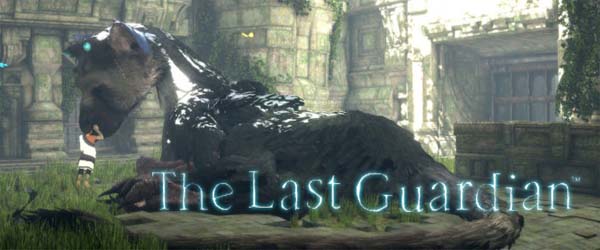
Being the follow-up to a masterpiece is no small order. Being the follow-up to two masterpieces is a Sisyphean task. Ico is a masterpiece of its time. Fumito Ueda and SIE Japan managed to follow that game with Shadow of the Colossus - a masterpiece of even higher order. The bar was set tremendously high for the team's third project: The Last Guardian. Multiple delays, a change in platform from PS3 to PS4, and Fumito Ueda's departure from Sony squashed a lot of the hype for the game. Might the game turn into vaporware? Or might it release in a condition analogous to Metal Gear Solid V?
On the surface, The Last Guardian comes off as being a mash-up of Ico and Shadow of the Colossus. Superficially, it's much more in-line with Ico: you play as a small boy who must guide a companion through a maze of environmental platformer obstacles and adventure puzzles. The catch this time around is that the companion happens to be a giant animal that you can climb and ride on.
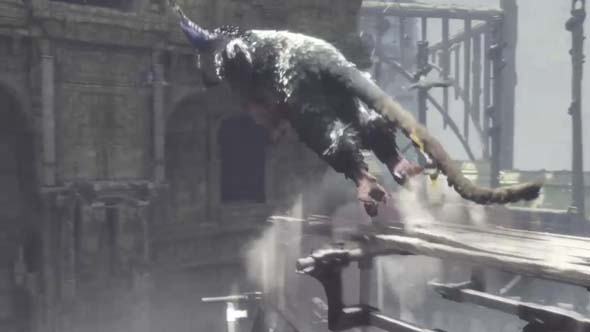
The Last Guardian share more with Ico, but your companion is a giant creature that you climb and ride on.
The big difference though, is that The Last Guardian is sort of an inversion of the gameplay of Ico. In Ico, the player character had to guide a helpless (some even speculated she is blind) princess through a castle and defend her from shadow monsters that try to drag her away. In The Last Guardian, however, it is the player character - the boy - who is mostly helpless. True, you have most of the agency and are guiding Trico through the maze. But Trico is the one with all the power, and your progress is often dependent on Trico getting you past obstacles.
This point is most hammered home by the game's combat mechanics - or rather, its almost complete lack thereof. The boy can't fight off the stone knights that hunt him down. You can only run away, or let Trico smash them into dust for you. If they catch you, they drag you off to a nearby mysterious blue doorway (a parallel to the smokey portals that the smoke monsters dragged Yorda through in Ico), and all you can do is mash buttons to kick and squirm. Ico and Shadow of the Colossus experimented with player agency by making the player question the motivations of the character and wonder if maybe you're doing more harm than good. The Last Guardian toys with agency in other ways. In this game, you, the player, are the helpless tag-along character in an escort quest. You get a glimpse through the eyes of Yorda from Ico or Ashley from Resident Evil 4.
The boy can't fight back, he can only kick and squirm - much like Yorda from Ico.
Not entirely though. The player and Trico make mutual contributions to progress, and their contributions are shared much more than Ico and Yorda. Much like how Yorda could occasionally open the magically-locked doors, the boy in Guardian also has to pull levers and open doors for Trico to pass from room to room. The boy also has to destroy glass eye murals that mesmerize and terrify Trico to the point of paralysis. The boy also hunts down barrels of [supposedly] food for Trico to eat whenever Trico is tired or wounded. But then there's also parts of the game in which the boy simply hops on Trico's back, and Trico leaps away to the next puzzle area without the player having to do anything... [More]
54c716c5-4407-4898-bee0-0725c5a7ce3e|1|5.0
Tags:The Last Guardian, Team Ico, Fumito Ueda, puzzle, platformer, Trico, child, escort quest, Ico, Shadow of the Colossus, PlayStation 4, Sony, exclusive, vaporware, Achievement unlocked
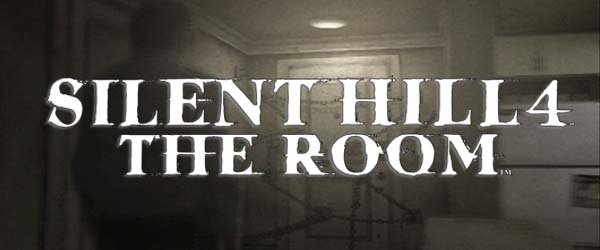
While I was playing through recent horror titles like The Evil Within, I noticed some interesting similarities with Silent Hill 4 that started to give me a new appreciation for some of this game's stronger aspects. In addition, while doing research for my Silent Hill timeline, I had to go back and play through Silent Hill 4: the Room again. I had only played through the game twice before, so I had to replay it in order to figure out how the timeline would work out. And while I was playing the game, I figured that I might as well go ahead and review it. At the time, it seemed like a novel idea to do a retro review of a Silent Hill game that wasn't Silent Hill 2, but lately, I've been seeing a lot of retro-reviews of The Room popping up other places. I haven't done any retro reviews yet; probably the closest thing has been my review of Demon's Souls. But in light of how unsuccessful the later Silent Hill games have been, the unfortunate cancellation of Silent Hills, and the uncertain future of the franchise (and of Konami as a studio), it's a good time to go back to look at what worked and what didn't about the previous games, and explore the question of whether we even want the franchise to continue.
The Room has the reputation of being the "bad" black sheep of the original Silent Hill tetralogy. I always thought that this reputation was unfortunate, and that the game wasn't quite as bad as people made it seem. I actually liked it better than Silent Hill 3 when I first played it, because I had never played the first Silent Hill. After I was able to track down a copy of the first game and play through it, Silent Hill 3 suddenly made a whole lot more sense, and I came to love it almost as much as I loved Silent Hill 2. So while I tend to agree that The Room is the "weakest" of the original Silent Hill games, I never really thought of it as being "bad"; just "less good". The release of future games by third party developers has only made The Room look better in retrospect.
An experimental formula
The game itself is a bit rough around the edges. It deviates significantly from the controls and mechanics established by the previous games in the franchise, and these changes are very hit-or-miss. This might be due, in part, to the possibility that The Room started out as an independent side project that was developed concurrently with Silent Hill 3, and that was eventually redesigned to work as a Silent Hill game in order to be more commercially viable. Whether or not that's true is still a hot issue of debate among the fanbase, but it's obvious to everybody that The Room plays a lot differently from previous titles.
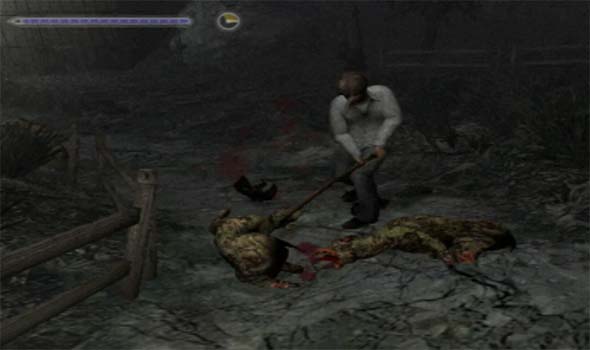
Movement and combat controls are radically changed from previous games in the series.
The most immediately obvious deviation is in movement and camera controls. The semi-first-person "tank" controls have been completely abandoned in favor of direct directional inputs, and the camera is significantly more limited than it has been in previous games. You can't snap the camera behind the character by holding the "look" button as you could do in previous games. Almost all camera angles are pre-set angles, and the player can usually only toggle between two possible camera angles in any given area.
This results in some very clumsy navigation of the environment, and it's very easy for the character to get turned around when camera angles flip. Most of the time, a camera change will go without a hitch, but there are a few frames in the game that consistently result in erratic and unpredictable movement. It happens most often when a camera change occurs concurrently with a change in direction of the character (to navigate around a corner or an obstacle). If the player's timing for changing the character's movement direction is not perfectly-timed, then the character ends up turning around, which can result in getting stuck in a loop between the two camera angles. This is the very reason that I prefer the tank controls. They may be a bit cumbersome, but at least they're consistent and always relative to a single frame of reference (the character's position in the world), rather than to an unpredictable camera.
The second major change is to combat. The game was designed to have a greater emphasis on melee combat, complete with new target-locking controls, a variety of breakable melee weapons, very limited ammunition for guns, and an on-screen meter for charging power attacks. The new movement controls do make it a bit easier to maneuver around enemies (especially multiple enemies), but only if you're in an open space and the camera angle doesn't go all wonky on you. The mechanics are serviceable, and I don't think they're as bad as some critics insist.
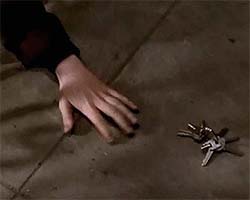
The designers were probably trying to mimic
the horror trope of fumbling for keys.
Inventory management is where things really start to get bad. Henry isn't a walking closet like the previous games' protagonists, and he has only a limited number of inventory slots. This is probably partly the result of the inventory being accessed in real-time by the directional buttons (which also might have played a role in the changes to the movement control scheme being entirely based up on the analog stick), in a desire to create a sense of frantically searching your pockets for a weapon or item while under pressure. It also adds more relevance to the Room 302 hub (another dramatic departure from previous games) by forcing you to go back to restock on supplies or swap out puzzle items.
But it's hindered by a lot of little mistakes... [More]
a5ccd49d-8af1-4839-8eb0-2796d3829980|6|4.5
Tags:Silent Hill, Silent Hill 4: the Room, Konami, Team Silent, KCET, Henry Townshend, Walter Sullivan, Eileen Galvin, room 302, horror, serial killer, murder, cult, occult, 21 Sacrements, sacrifice, ritual, ghost, escort quest, Alfred Hitchcock, retro review
|

| 12 | | | | | | | 60 | | 11 | | | | | | | 55 | | 10 | | | | | | | 50 | | 09 | | | | | | | 45 | | 08 | | | | | | | 40 | | 07 | | | | | | | 35 | | 06 | | | | | | | 30 | | 05 | | | | | | | 25 | | 04 | | | | | | | 20 | | 03 | | | | | | | 15 | | 02 | | | | | | | 10 | | 01 | | | | | | | 05 |
|